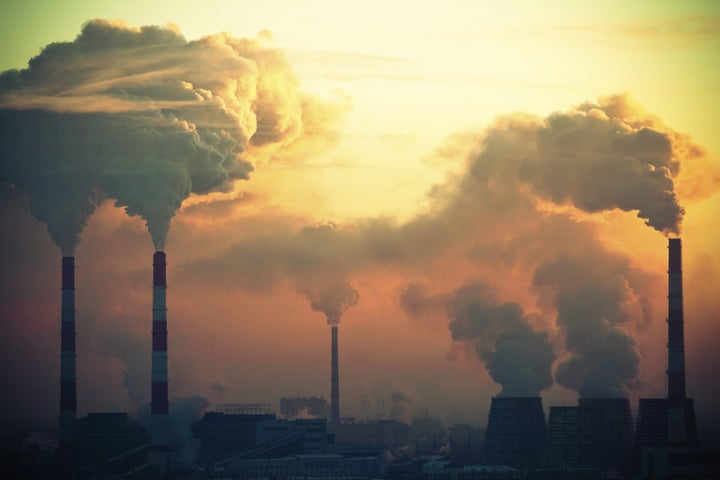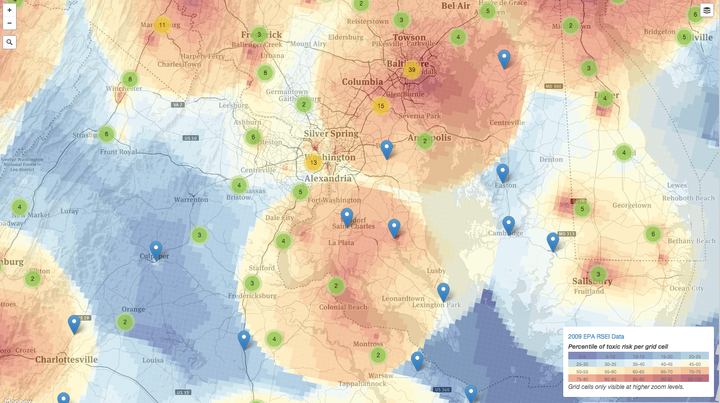
Not all polluters are created equal.
Just five percent of industrial polluters account for 90 percent of toxic emissions in the United States, according to a new study published in the journal Environmental Research Letters last week.
What’s more, these “super polluters” tend to cluster in low-income and minority communities, putting poor people and people of color at an “exponentially elevated risk” from industrial contaminants.
The research reveals what environmental sociologist Dr. Mary Collins calls "a double disproportionality." The findings show not only that a few polluters are much dirtier than others, but also that racial and socioeconomic inequalities can determine where these “toxic outliers” set up shop.
"The study is linking privilege on the emission side -- the super polluter class -- to inequality on the problem side," Collins, a co-author of the study and assistant professor at the State University of New York College of Environmental Science and Forestry, told The Huffington Post.

It’s no secret that poor and minority communities shoulder a disproportionate burden of environmental harm.
In 1987, a seminal study found that the racial makeup of an area was the single most important factor in determining where a toxic waste facility was located. Since then, researchers have repeatedly shown that the air is often dirtier, the water murkier, and the health outlooks bleaker in poor and minority neighborhoods.
The water contamination disaster in Flint, Michigan -- a majority black and largely working-class city -- has recently put "environmental justice" and "environmental racism" back in the national spotlight.
And now, the new super-polluter study confirms that a link between a neighborhood's demographics and pollution still exists, according to Dr. Sacoby Wilson, assistant professor at the University of Maryland’s School of Public Health, who was not involved in the study.
The new research “follows a line of studies that have been done over the last 30 years showing the differential burden of hazards in areas that have a higher proportion of people of color and low-income groups," Wilson told HuffPost.
For the study, which was funded by the National Socio-Environmental Synthesis Center, researchers looked at one billion toxic releases from 16,000 industrial facilities in the U.S. and used the data to identify the locations of super polluters. They then looked at the racial and socioeconomic makeup of those locations to see whether or not certain groups were disproportionately affected by toxic emissions.
“We have to change the system.”
- Dr. Sacoby Wilson, University of Maryland School of Public Health
The researchers discovered that the distribution of super polluters is more uneven than previously believed.
“It’s pretty well-established that some societies are worse to the environment than others,” Collins said. “But these highly skewed patterns of pollution seem more extreme than we would have expected."
Dr. Paul Mohai, a professor at the University of Michigan-Ann Arbor who was not involved in the study, said that the new research reveals how disparities in environmental risk affect many communities outside of the national spotlight.
"What we have seen in Flint may be just the tip of the iceberg when it comes to environmental contamination in low-income and people of color of communities," Mohai wrote in an email to HuffPost.
What explains the fact that the worst polluters tend to plant themselves in low-income and minority communities? According to Wilson, these communities often lack the economic and political power needed to block dirty factories from locating in their neighborhoods or to enforce existing environmental regulations.
“These communities become dumping grounds because they’re the avenues of least resistance,” he said. “I call it contamination without representation.”
The study’s authors, however, insist that there may be a solution. If it’s true that just a handful of polluters are responsible for most of the country’s toxic emissions, cracking down on a few facilities could go a long way in reducing harmful air pollution, according to Collins.
Environmental problems often seem huge and intractable, Collins said, "but this could be a way to take big problems, separate them into their parts and target the worst of the worst."
According to Wilson, correcting the uneven distribution of pollution in the U.S. will require targeting the roots of the environmental injustice: institutionalized racism, economic inequality and political disenfranchisement.
“We have to change the system,” Wilson said.
Also on HuffPost:

